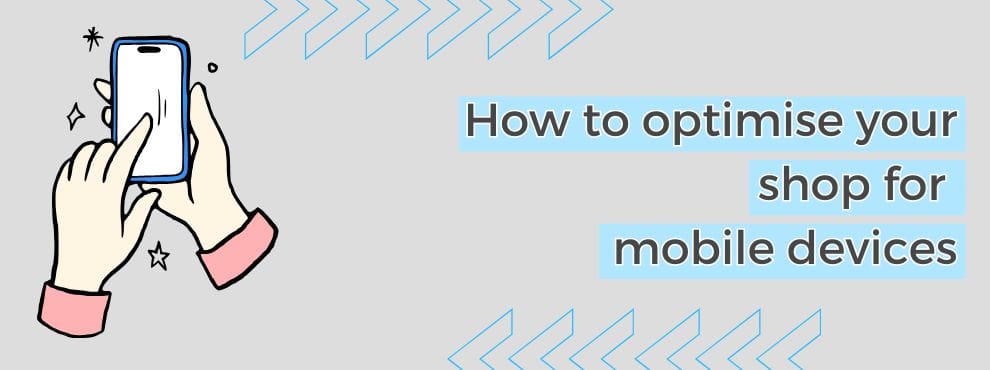In a world where more than 50% of internet searches are made from mobile devices, having an online store adapted to these devices is no longer an option, but a necessity. If your site is not optimized to offer a smooth mobile experience, you could be losing a large percentage of potential customers and, consequently, sales.
At IDX Innovadeluxe we know that competition in e-commerce is fierce and that users do not hesitate to abandon a website that does not meet their expectations. That’s why, in this article, we’ll explain how to optimize your store for mobile devices, making sure to attract and retain your customers while maximizing your conversions.
Table of contents
Importance of mobile optimization
The use of mobile devices has not only increased, but it has also changed user expectations. Today, consumers expect online stores to be fast, easy to navigate and visually appealing, regardless of the device they use. If a store does not meet these expectations, users are likely to abandon the site and look for alternatives. This behavior not only affects your sales, but also negatively influences your ranking in search engines like Google, which prioritize mobile-optimized websites in their rankings.
Responsive design: the key to a consistent experience
The first step in optimizing your store for mobile devices is to implement responsive design. This approach ensures that your store’s content automatically adapts to any screen size, offering a consistent user experience on phones, tablets and computers.
A responsive design not only improves navigation, but also reduces the need to create separate versions of your store for each type of device, saving time and resources. By adopting this strategy, you ensure that your images, menus and buttons are accessible and functional on all platforms.
Loading speed
Loading speed is one of the most important aspects for mobile users. If your store takes more than three seconds to load, you are likely to lose a lot of potential customers. Optimizing your store’s speed not only improves the user experience, but also boosts your SEO, as search engines favor fast sites.
To speed up loading time, consider the following strategies:
- Compress images and media files without losing quality.
- Use modern image formats such as WebP.
- Implement an efficient caching system.
- Minimize HTML, CSS and JavaScript code.
An agile and fast site generates confidence in users and encourages a higher conversion rate.
On mobile devices, navigation should be as simple as possible. A complex or poorly structured menu can frustrate users and lead them to abandon your store. Make sure your site design includes a clear and accessible menu, preferably “hamburger” style, which allows users to find what they are looking for easily.
Also, use large, highly visible buttons, ideal for touching with the finger. Avoid having the elements too close together to prevent accidental clicks and make the content easy to read by using legible fonts and well-distributed spaces.
Optimizing the checkout process
The checkout process is the heart of any online store, and on mobile devices it must be fast and smooth. A long or unintuitive process can lead to cart abandonment.
- Simplify forms: Ask only for essential information and use features such as autocomplete.
- Offer multiple payment options: Be sure to include popular methods such as digital wallets (Apple Pay, Google Pay) in addition to credit and debit cards.
- Implement a guest checkout system: Don’t force users to register to make a purchase.
Optimizing this flow helps improve the customer experience and increases the likelihood of completing a sale.
Optimized content for small screens
Your store content should adapt to the dimensions of mobile devices. This means avoiding long, compact text and opting for short, well-organized paragraphs. In addition, use optimized images and videos that are attractive and do not slow down the loading of the site.
Using clear headings and visible calls to action makes it easier for users to quickly identify offers, promotions and featured products, which improves the browsing experience.
Testing and ongoing monitoring
Once you implement changes to optimize your mobile store, it is crucial to perform periodic testing to ensure everything is working properly. There are tools such as Google Mobile-Friendly Test and PageSpeed Insights that can help you identify areas for improvement.
In addition, regularly analyze the behavior of your mobile users using tools such as Google Analytics. This data will allow you to adjust your strategy and make sure you are providing an optimal experience.
Mobile SEO
Optimizing for mobile is not just about design; it also includes specific SEO strategies. Google prioritizes mobile-friendly sites in its search results, so make sure your content is optimized for this type of traffic.
Use relevant keywords in your product descriptions and titles, improve loading speed and make sure important pages are easily accessible from mobile devices. It is also essential to implement a sitemap that allows search engines to index your store efficiently.
Security and trust on mobile devices
Security is a priority for online shoppers, especially on mobile devices. Implementing an SSL certificate not only protects your customers’ data, but also improves your Google ranking.
Make sure that users see clear indications of security, such as padlock icons in the address bar or text confirming the protection of their data. This trust can be decisive in closing a sale.
Conclusion
Optimizing your store for mobile devices is an essential step nowadays. From responsive design to intuitive navigation and a streamlined checkout process, every detail counts in creating a positive experience that converts visitors into customers. At IDX Innovadeluxe, we understand that every store is unique and we work to ensure yours shines on all devices. Invest in mobile optimization today and get ready to reach new levels of e-commerce success.
Related Posts





Deja un comentario